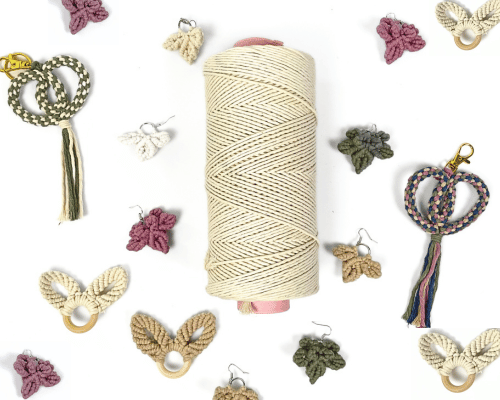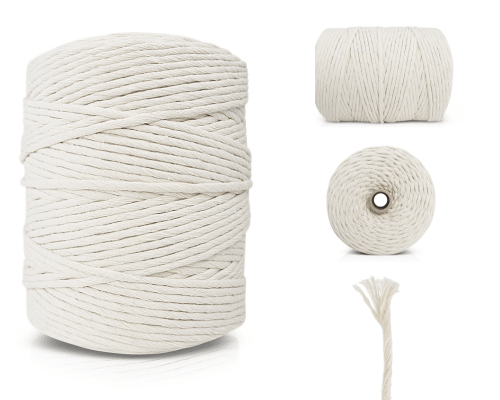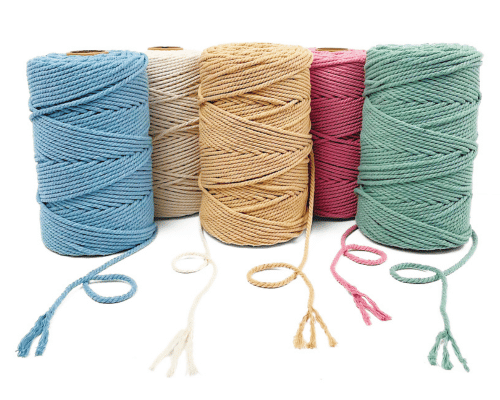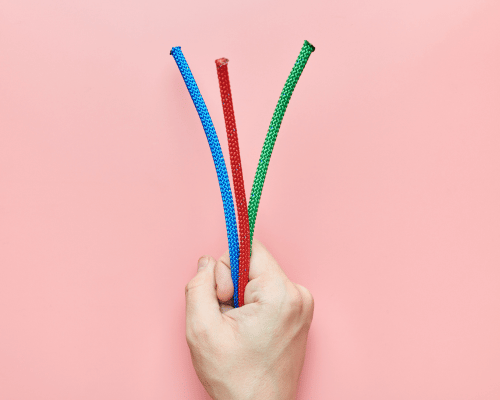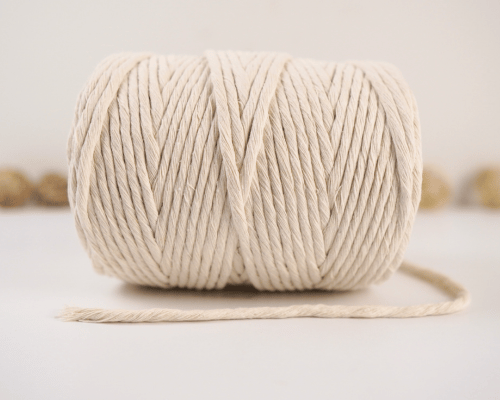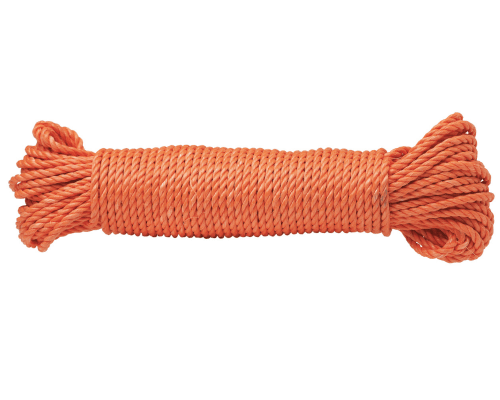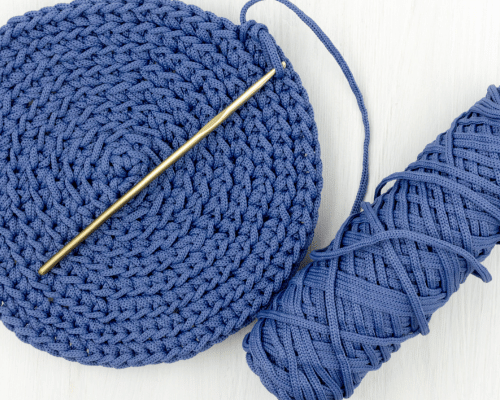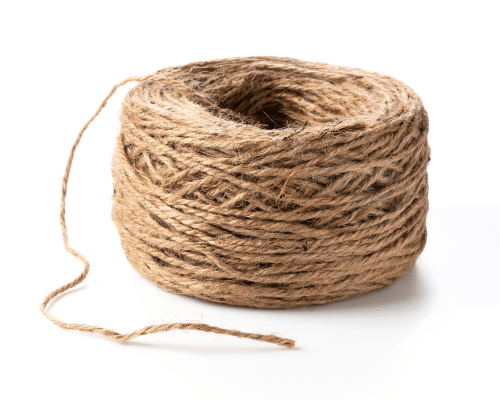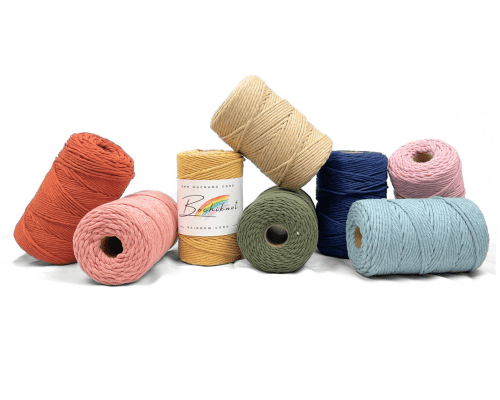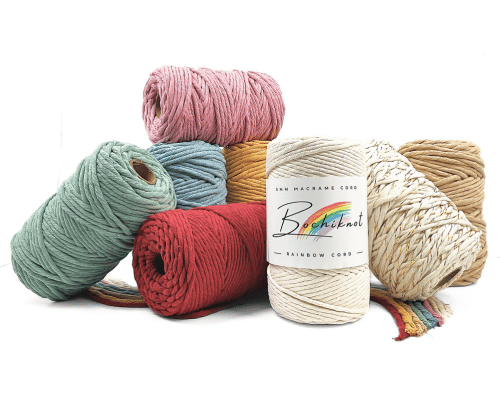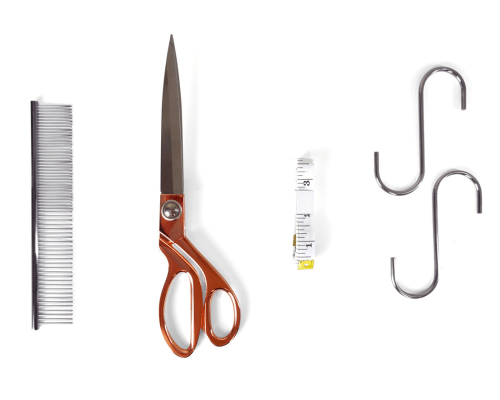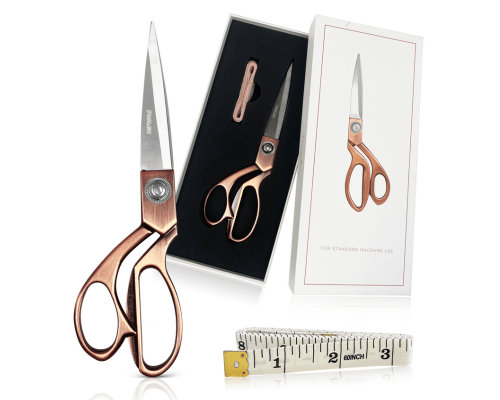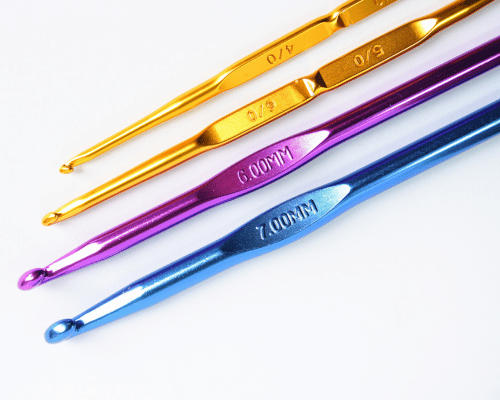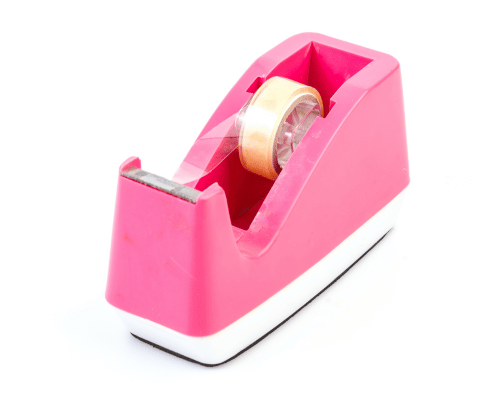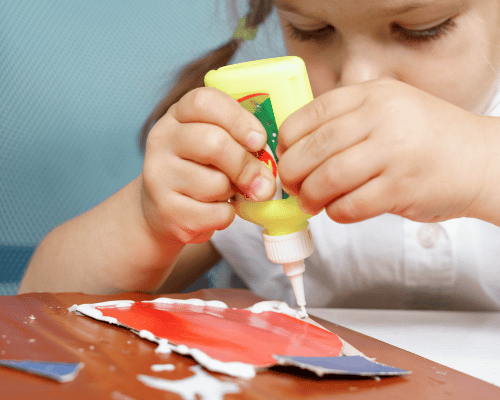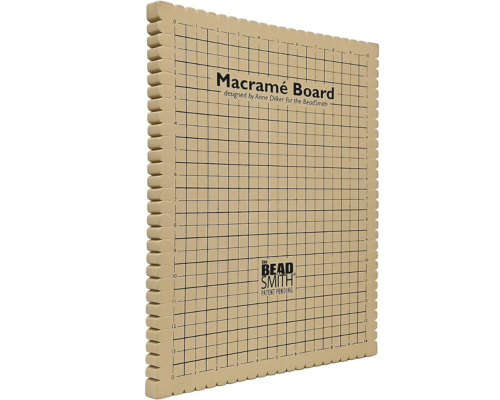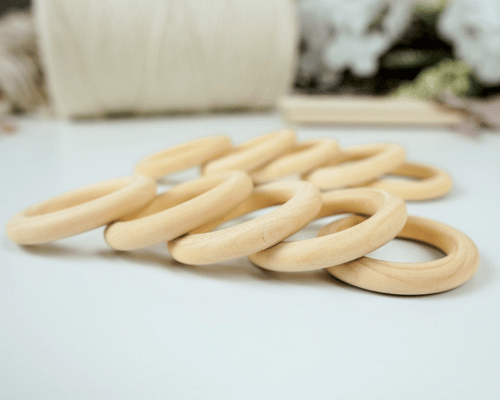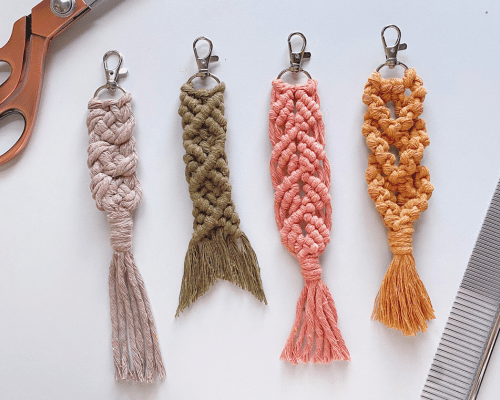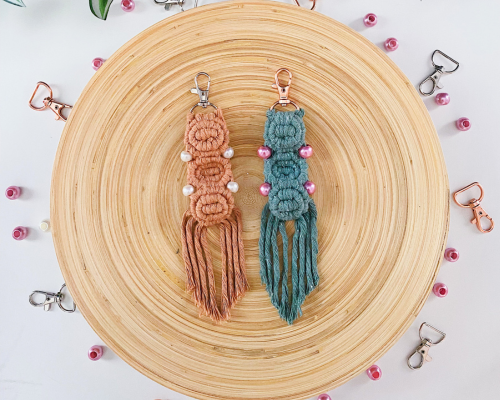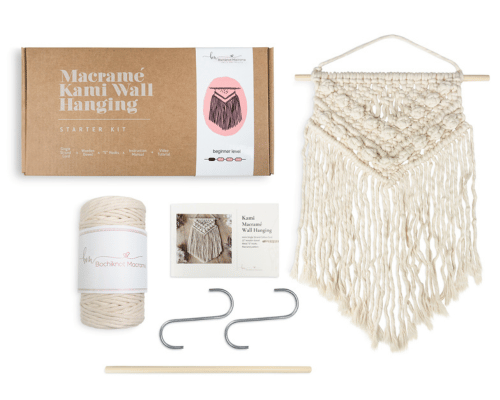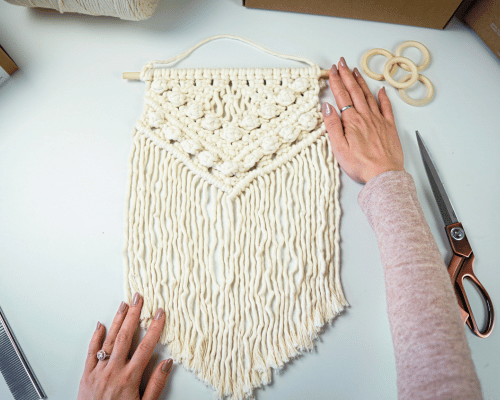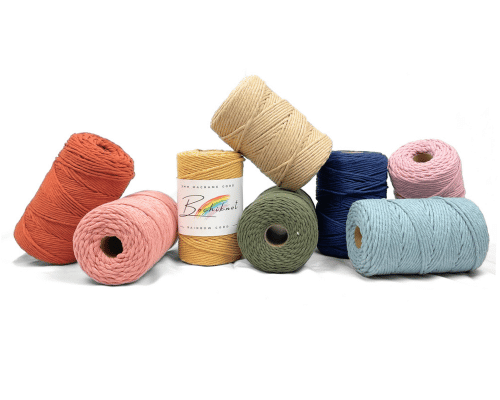Table of Contents
- Macrame Cord Terminology
- 1. Cord
- 2. String
- 3. Rope
- Types of Macrame Cord
- 1. Single-Strand Macrame Cord
- 2. 3-Ply / Multi-ply Macrame Cord
- 3. Braided Macrame Cord
- Macrame Cord Material
- 1. Cotton
- 2. Nylon
- 3. Jute
- 4. Polyester
- 5. Hemp
- 6. Waxed Cord
- 7. Macrame Yarn
- Choosing the Right Macrame Cord
- Choosing the Right Size of Macrame Cord
- Size: 1mm and 2mm Cord
- Size: 3mm, 4mm, and 5mm Cord
- Size: 8mm+
- What Do We Recommend?
- What Can Be Made With Macrame Cord?
- 1. Macrame Wall Hangings
- 2. Macrame Plant Hangers
- 3. Macrame Jewelry
- 4. Macrame Dreamcatchers
- 5. Macrame Home Decor
- 6. Macrame Hang Bags and Purses
- 7. Macrame Curtain Tiebacks
- 8. Macrame Pet Collar Accessories
- 9. Macrame Garments
- 10. Macrame Fashion Accessories
- 11. Macrame Wedding Decor
- Where to Buy Macrame Cord?
- Local Craft Stores (e.g., Michaels or Hobby Lobby)
- Dyeing Your Cord
- Macrame Tools
- 1. Sharp Scissors
- 2. Measuring Tape
- 3. Stainless Steel Fringe Comb
- 4. Crochet Hook
- 5. Cord Dispenser
- 6. Tape
- 7. Glue
- 8. Needle and Thread
- 9. Cork Pad and Pins
- 10. S-Hooks
- 1. Wooden Dowels (for Wall Hangings or Plant Holders)
- 2. Wooden Rings / Metal Rings
- 3. Keyrings / Lobster Clasps (for Keychains)
- 4. Large Metal Rings (for Mandalas or Dreamcatchers)
- 5. Embellishments (Beads)
- Quick and Easy Way To Get Started With Macrame
In a world where creativity knows no bounds, macrame has emerged as a timeless craft (from the 13th century Arab weavers to our modern times) that allows enthusiasts to weave their imagination into intricate patterns and designs.
Whether you're a seasoned macrame artist or a complete novice, one thing remains true: the quality of your finished masterpiece depends mainly on the basic materials you choose.
Macrame, the art of knotting cords into decorative patterns, has experienced a resurgence in recent years, captivating DIY enthusiasts, interior designers, and crafters alike.
However, navigating the myriad of available macrame materials can be daunting. The cords, beads, and supports you select can significantly impact the look, durability, and ease of creating your macrame projects.
In the Ultimate Beginners Guide, we focused on tips for beginners and touched on the cords and materials you need for a macrame project, and in the Selecting Your First Macrame Project guide, we went over some potential projects you could create as a beginner and the basic knots.
Now that you have a project in mind and perhaps have practiced some basic knots, you’re ready to jump right in! But wait - let’s review the materials and supplies you'll need to perfect those macrame patterns in more detail first.
In this blog post, we'll unravel the intricacies of macrame materials selection, ensuring that every knot you tie, and every thread you weave is a step closer to crafting a wonderful macrame project.
Whether seeking the perfect macrame rope for a bohemian wall hanging or the ideal beads for a customized bracelet, we've got you covered.
So, let's embark on this creative journey together, exploring the world of macrame materials and discovering the knot-so-ordinary choices that will elevate your projects to new heights.
Macrame Cord Terminology
In the world of macrame, the choice between cord, string, and rope can significantly impact the outcome of your basic knots and, by extension, your projects.
The terms cord, rope, and string are often used interchangeably but refer to materials with distinct characteristics and purposes. The material you use to knot with will depend on the project type you choose. Let's explore the differences and how each is utilized in basic macrame knots.
1. Cord
Cord is a term typically used for a thin to thick material made of fibers or strands twisted or braided together.
In macrame, the cord is commonly chosen for its flexibility, which allows for intricate knotting and fine details. It comes in various materials like cotton, nylon, jute, and hemp.
Thin cords (around 1mm to 2mm) are ideal for delicate jewelry pieces, while thicker cords (3mm to 5mm) are suitable for larger, more substantial projects like wall hangings and plant hangers.
Cord's pliability makes it perfect for crafting intricate patterns and small-scale designs.
You may notice that many macrame artists (including me!) use “cord” as the all-encompassing term for the string/rope we use in macrame.
However, in my patterns and video tutorials, you will notice that any size (thickness) of 3mm and higher is defined as a macrame cord, whereas cords 1-2mm is noted as string.
2. String
String is generally used for thinner, more lightweight materials than cord or rope. In macrame, string is typically chosen for its delicate appearance and suitability for intricate work.
Thin string is ideal for creating fine jewelry, such as bracelets, necklaces, and earrings.
While it lacks the structural strength of a cord or rope, string is perfect for micro-macrame, where precision and small-scale designs are essential. It allows for creating intricate knots and patterns with a delicate, elegant finish.
Some macrame artists and brands define the term “string” as a single-strand twist-type cord, but I define it as the thinner cords of macrame.
3. Rope
Macrame rope is typically thicker and sturdier, often consisting of multiple strands or fibers twisted (3-ply or multi-plied cords) or braided together.
The rope is chosen in macrame for its strength and ability to support more substantial projects.
Thicker ropes (5mm and above) are commonly used for creating large wall hangings, plant hangers, or functional items like hammocks and chairs. Macrame rope provides the structural integrity required for these projects, ensuring they can bear the weight of plant pots or people.
Cord, string, and rope are all used in macrame; their differences in thickness, flexibility, and strength make each material more suitable for specific projects.
Cord is versatile for small, medium, or large projects whereas string excels in micro-macrame and fine jewelry.
Rope is the go-to choice for added texture, large-scale or robust creations. Understanding these distinctions lets you choose the suitable material for your designs, ensuring that your projects turn out as envisioned.
Types of Macrame Cord
The world of macrame is intricately tied to the selection of cord, where each type offers distinct characteristics and creative potential.
As we embark on this exploration, we'll delve into the nuances of macrame cord varieties, from the simplicity of single-strand cord to the strength and texture of 3-ply cord and the decorative flair of braided cord.
Understanding these differences empowers you to make informed choices for your macrame projects, whether crafting delicate jewelry or substantial wall hangings.
So, let's unravel the secrets of these macrame cord types and unlock the full spectrum of creative possibilities in your macrame journey.
1. Single-Strand Macrame Cord
Single-strand macrame cord is a straightforward and classic choice for many macrame projects. It consists of a single-strand cord or thread made of tiny fibers twisted into a single-strand cord and is often made from materials like cotton, nylon, or jute.
It offers a clean and minimalist look, creating a soft, smooth, and flat-like aesthetic, making it versatile for various crafting styles.
2. 3-Ply / Multi-ply Macrame Cord
A 3-ply macrame cord, as the name suggests, is composed of three separate strands of tiny fibers twisted together.
This construction adds strength and durability to the 3-Ply strand of cord, making it well-suited for more extensive and substantial macrame projects.
The twisting of the strands creates a textured appearance, adding depth and visual interest to your designs.
3. Braided Macrame Cord
Braided macrame cord is another variation that offers a unique texture and visual appeal. It is created by intertwining multiple smaller groups of fibers into braided rope.
This construction gives the cord a distinct appearance, resembling a series of interconnected loops or twists. A braided cord is often used for adding decorative elements to macramé projects, as its texture can enhance the overall aesthetic.
The type of macrame cord you choose can significantly impact the outcome of your projects.
Single-strand cord offers flexibility and softness, 3-ply cord provides strength and texture for larger projects, and braided cord adds decorative elements and visual interest to your designs.
Each type of cord has unique characteristics, allowing you to tailor your choice to the specific requirements and style of your macrame endeavors.
Macrame Cord Material
Macrame cord is a fundamental material used in the art of macrame.
Crafters use this primary medium to create intricate knots and patterns in various macrame projects, such as wall hangings, plant hangers, jewelry, and more.
Macrame cord is typically made from various materials, each with unique characteristics.
We will look at each of your standard cord options and what they’re used for in some detail to ensure you make the right choice for your project.
Protip: If you haven’t chosen a macrame project yet, check out our Discovering the Craft: Selecting Your First Macrame Project blog.
1. Cotton
Cotton macrame cord, prized for its softness, is a foundational material for various crafting projects.
Whether you're a seasoned artisan or a newcomer to the world of macrame, this cord's pliability, the myriad color options, and cord type options (single strand, 3-ply, and braided) make it an excellent choice for your modern macrame endeavors.
With cotton cord, the crafting possibilities are virtually boundless, allowing you to infuse your unique style into each new knot and design element.
From captivating wall hangings that transform your living space into an artistic sanctuary to delicate jewelry pieces that accentuate your style, cotton macrame cord is the artisan's go-to for achieving intricate designs and textures.
It's the perfect material for crafting everything from plant hangers to dreamcatchers, giving your creations a touch of bohemian or rustic charm.
With its soft, inviting feel and the ability to effortlessly incorporate various knotting techniques due to the delicate nature of the cotton, this also makes it one of the best cords for making a fringe.
The thin fibers make it easy to brush through, giving your piece that soft and lush-looking fringe. The neutral “natural” or off-white color represents the modern era of macrame and is the most in style.
2. Nylon
As cotton macrame cord offers unique qualities, nylon cord steps into the creative spotlight with distinct attributes.
Paracord is typically made of nylon, and this cord boasts durability and a subtle sheen that can elevate your macrame projects to a whole new level.
Paracord is praised for its durability and resistance to fraying, which makes it a dependable choice for projects that need to withstand the test of time.
The nylon cord is, however, typically not used as a part of your bohemian-inspired knotting projects, with some complaining about the plastic look of the cord. The nylon cord is most popular for craft projects that require durability.
For beginners, nylon is recommended for practicing knots due to its ease of unraveling in case of knotting errors.
3. Jute
Shifting our focus from the sleek and modern to the natural and rustic, let's dive into the world of Jute macrame cord.
Jute cord is celebrated for its authentic, earthy appearance and rougher texture, making it an appealing choice for those who appreciate the beauty of all things natural.
Whether you're a seasoned macrame artisan or a newcomer intrigued by the allure of rustic aesthetics, Jute cord offers an opportunity to infuse your projects with a touch of the great outdoors.
Jute macrame cord is the material of choice when you want to imbue your creations with a bohemian or earthy vibe.
Its natural, eco-friendly appeal is perfect for crafting plant hangers, wall hangings, and dreamcatchers that seamlessly blend with nature-inspired décor.
The textured quality of the Jute cord adds depth and character to your projects, and its versatility allows you to experiment with various knotting techniques to create one-of-a-kind pieces.
Whether aiming to craft cozy home accents or unique fashion accessories, Jute macrame cord invites you to embrace the rugged charm of the great outdoors in your creative endeavors.
4. Polyester
Now, let's turn our attention to a material that combines strength and style - A polyester macrame cord.
Polyester cord offers a versatile alternative for macrame enthusiasts, balancing durability with a polished appearance, making it the best option for outdoor macrame!
Polyester macrame cord is an excellent choice when you’re looking for both longevity and a contemporary look. Its durability and resistance to fading and fraying make it suitable for projects intended to withstand the test of time.
Polyester's subtle shine adds a touch of sophistication to your macrame creations, making it a favored option for those looking to infuse a polished and modern sensibility for dog collars, dog leashes, or outdoor projects.
Whether you envision sleek decor or fashion-forward accessories, Polyester macrame cord invites you to explore its knot-so-ordinary potential and elevate your crafting to a new level of durability and elegance.
5. Hemp
Turning our gaze to a material that embraces sustainability and a raw, natural beauty, we venture into the world of Hemp macrame cord.
Hemp cord, with its eco-friendly qualities and distinctive texture, is an enticing choice for those who appreciate their crafting materials' earthy aesthetics and environmental consciousness.
Whether you're an experienced macramé artisan or a newcomer curious about the charms of sustainable crafting, Hemp cord beckons you to infuse your projects with a touch of nature.
Hemp macrame cord excels in capturing the essence of rustic and eco-conscious crafting.
Its rough, authentic texture adds character to your creations, making it an ideal choice for plant hangers, wall hangings, and jewelry that seamlessly integrates with natural and bohemian décor.
The eco-friendly nature of Hemp cord aligns with a sustainable lifestyle, allowing you to craft mindfully.
It should, however, be noted that hemp fibers are rough and thick - especially in comparison to cotton, so it is not well-suited to making projects with a fringe.
Whether you're envisaging eco-conscious home accents or unique, environmentally-friendly accessories, the Hemp macrame cord invites you to embrace the rugged charm of sustainable crafting and connect with the world through your creative endeavors.
6. Waxed Cord
Waxed macrame cord stands out in the world of macrame for its unique combination of resilience and versatility.
The wax coating adds water resistance and provides stiffness, ensuring that your macrame creations maintain their shape over time.
Our favorite use for waxed cords is micromacrame projects such as jewelry and accessories that benefit fromdurability and a polished appearance.
Waxed cord is also great for traditional micro macrame projects because the ends can be burned off and fused with the macrame itself!
Working with waxed macrame cords may require a slightly different approach than uncoated cords. The waxed surface provides a firmer grip when knotting, allowing for more precise and stable creations.
Remembering that the wax can wear off with time and use, contributing to the cord softening and taking on a more natural feel.
Crafters often appreciate this evolution as it adds character to their macrame pieces.
7. Macrame Yarn
Delving further into macrame materials, let's shine a spotlight on yarn for macrame. Before reading further, it must be noted that yarn or wool would be challenging to use when used on its own for macrame.
Often, yarn or wool is used with a more sturdy cord like cotton as they are not strong enough to retain shape well.
Usually, when yarn and macrame cords are used together, we use them in macraweaves.
Using yarn for macrame projects will make your art stand out, especially if you want to experiment with textures and colors.
Thick or thin regular yarn allows for unique macrame patterns and designs, bringing depth to your creations.
The choice of macrame cord depends on the project's design, purpose, and personal preferences.
Thicker cords are suitable for larger, more substantial pieces, while thinner cords are ideal for intricate details and jewelry.
The color and texture of the cord also play a significant role in achieving the desired aesthetic for a macrame creation.
As you gain experience in macrame, you'll become more familiar with the different cord options and their uses, allowing you to make informed choices for your projects.
Choosing the Right Macrame Cord
As a novice in the world of macrame, choosing the right cord for your projects can be a challenge - especially if you’re looking to experiment!
So, we have put together the seven essential qualities to consider when selecting your macrame cord.
- Composition: The material from which your macrame cord is crafted is paramount. Traditionally, fibers like hemp and jute were favored by macramé artisans. However, the availability of man-made fibers like nylon and polyester has expanded the horizons of macrame cord choices.
- Strength: The robustness of your macrame cord is primarily determined by its composition. Cords made from jute, leather, and nylon are known for their durability.
- Twist: The manner in which the cord's individual strands are twisted or braided during manufacturing significantly impacts its strength. Braided macrame cords are less prone to unraveling compared to twisted ones. To prevent unraveling, it's advisable to treat cord ends by tying Overhand knots or wrapping them with tape.
- Stiffness: Macrame cords should possess the flexibility to conform to pattern requirements. For delicate projects like bracelets or necklaces, opt for thinner cords such as cotton embroidery threads, which offer softness and pliability.
- Texture: Consider the cord's texture, as rough surfaces may irritate the skin. Very rough and metallic cords are less suitable for necklaces and bracelets. Instead, opt for materials like nylon, silk, or cotton, which are more skin-friendly. Leather can also be used, as it tends to soften with use.
- Diameter or Width: The thickness of your macrame cord, typically measured in millimeters (mm), should match the requirements of your project. Consider whether the cord needs to be threaded through beads, buttons, or other embellishments.
- Amount or Quantity: The quantity of cord refers to the length required for your entire project. Macrame cords are available in various packaging sizes, from large rolls to shorter lengths.
Ultimately, your choice of macrame cord should align with your project's specific requirements and vision, considering factors such as material, strength, texture, and diameter.
Whether you opt for traditional favorites like hemp or explore modern options like cotton, each cord type offers unique advantages to enhance your macrame creations.
Choosing the Right Size of Macrame Cord
When it comes to macrame, one of the critical decisions you'll need to make is selecting the right cord size for your project.
Macrame cord typically comes in various thicknesses, with the most common cord sizes being 3mm, 4mm, and 5mm. Additionally, you can find thinner options like 1mm and 2mm cords, which serve their unique purposes.
Size: 1mm and 2mm Cord
1mm and 2mm cords are the fine threads of the micro-macrame world. These delicate cords are excellent for crafting intricate jewelry like bracelets, necklaces, and earrings. They allow you to create detailed and precise knot work and offer your accessories a dainty, elegant finish.
Size: 3mm, 4mm, and 5mm Cord
On the other end of the spectrum, 3mm, 4mm, and 5mm cords are thicker and more substantial.
They are well-suited for all macrame projects, from small keychains to larger wall hangings. The choice among these three sizes often depends on the scale and style of your project.
A 3mm cord offers a more delicate look, while a 5mm cord provides a bolder, chunkier appearance. The 4mm cord is a versatile middle-ground option that works well for many projects, balancing detail and sturdiness.
Ultimately, your choice of cord size should align with your creative vision and the specific demands of your macramé project, allowing you to achieve the desired aesthetic and functionality.
Size: 8mm+
Macrame cords with a thickness of 8mm or more are the heavyweights of the macrame world. Their substantial size and strength make them ideal for large-scale projects that demand durability and presence.
These cords are commonly used for adding varying textures when crafting wall hangings, plant hangers, and other substantial décor pieces.
Their size allows for bold and intricate knotwork, resulting in stunning designs that can become striking focal points in your space.
If you want to create statement pieces with a substantial visual impact, an 8+ mm macrame cord is your go-to choice.
What Do We Recommend?
Choosing the type of cord you will use when you start your macrame journey is one of the biggest questions we get, and our answer is pretty simple: a tightly twisted single-strand cotton cord.
When it comes to macrame, single-strand cotton cord emerges as a versatile and dependable choice for crafters of all levels.
Its softness and pliability make it an excellent canvas for intricate knotwork, allowing you to create stunning patterns and detailed designs.
Cotton cord is also the best for creating fringes on your macrame projects because it can be brushed out easily.
Its availability in various thicknesses and a broad spectrum of colors opens up endless possibilities for customization, making single-strand cotton macrame cord an indispensable staple in your macrame toolkit.
While single-strand cotton macrame cord is renowned for its softness and flexibility, you may seek more structural integrity for specific projects.
Enter the 3-ply cotton macrame and braided macrame cord, both reliable alternatives. 3-ply and braided cords enhance durability and a textured aesthetic, making excellent choices for more robust macrame creations.
Whether you're crafting intricate wall hangings, plant hangers designed to hold heavier pots, or macrame swing that needs to withstand the elements, both 3-ply and braided macrame cords rise to the occasion, ensuring your projects maintain their shape and strength over time.
The main difference between 3-ply and braided, other than the subtle differences in their textured appearances, is the ability for 3-ply to fringe.
After separating the three individual strands of the 3-ply cord, you can still run a macrame comb through to create soft fringes, whereas fringe braided cords would be very difficult.
In summary, whether you opt for the softness of single-strand or the sturdiness of 3-ply and braided, all three varieties of cotton macrame cords empower you to explore your creative potential and bring your visions to life.
What Can Be Made With Macrame Cord?
Macrame cord is a versatile crafting material that can create various decorative and functional items. You can use it for many beautiful macrame projects if it can be knotted.
Below are 11 popular macrame projects that can be made with macrame cords, listed by type of project.
1. Macrame Wall Hangings
Macrame wall hangings are one of this cord's most iconic and artistic uses. Crafters can design intricate patterns and textures to create stunning wall art pieces.
WATCH VIDEO: The Ultimate Beginner's Guide To Making a Large Macrame Feather Wall Hanging
2. Macrame Plant Hangers
Macrame plant hangers are a stylish way to display your indoor plants. They come in various designs and sizes to accommodate different pot shapes and sizes.
WATCH VIDEO:
How to Macrame a Plant Hanger in Under 10-Minutes | Quick, Easy and Stylish! Perfect For Your Home
3. Macrame Jewelry
Thin macrame cord is excellent for making micro-macrame bracelets, necklaces, and earrings. You can incorporate beads and various knots to create unique jewelry pieces.
WATCH VIDEO: DIY Macrame BOHO Feather Earrings | Beginner Friendly
4. Macrame Dreamcatchers
Macrame cord is often used to create the webbing of dreamcatchers, which can be decorated with feathers and beads.
WATCH VIDEO: Easy Macrame DIY: How To Make A Unicorn Dreamcatcher Tutorial
5. Macrame Home Decor
Macrame can make various home decor items, including curtains, table runners, cushion covers, and room dividers.
6. Macrame Hang Bags and Purses
Some crafters use macrame cords to make bags and purses. These items can be both functional and fashionable.
WATCH VIDEO: How to DIY a $2000 Prada Macrame Net Bag For $8
7. Macrame Curtain Tiebacks
Macrame cord can be used to craft decorative curtain tiebacks, adding a touch of elegance to your window treatments.
WATCH VIDEO: DIY Simple Macrame Curtain Tie & Tassel Keychain
8. Macrame Pet Collar Accessories
You can craft pet accessories like dog collars and leashes using macrame cord, adding a personalized touch to your pet's gear.
WATCH VIDEO: DIY How to Make a Macrame Dog Collar | Daisy Pattern
9. Macrame Garments
More advanced crafters use macrame cords to make clothing items like vests, tops, and belts.
These projects often require a more advanced understanding of macrame (intermediate and advanced clothing patterns can be found on our Bochiknot Macrame Community), but we do have a few free patterns for advanced beginners.
10. Macrame Fashion Accessories
Macrame can make various accessories, including headbands, keychains, and even wall-mounted organizers. A great beginner project to start with is a simple keychain pattern.
WATCH VIDEO: How to DIY A $300 ZIMMERMANN Macrame Headband for Only $3!
11. Macrame Wedding Decor
Macrame can be incorporated into wedding decor, including ceremony backdrops, table runners, and bouquet wraps.
WATCH VIDEO: DIY Macrame Flower Wedding Bouquet Wrap
The versatility of the macrame cord means that it can be adapted to suit a wide range of crafting preferences and skill levels. Whether you're a beginner or an experienced crafter, there's a macrame cord to suit your project interests and needs.
Where to Buy Macrame Cord?
When it comes to purchasing macrame cord, you have several options, each with its advantages and considerations:
Etsy is an excellent platform for sourcing macrame cords, especially if you prioritize quality craft supplies.
Many independent sellers and artisans offer various macrame cords, including various materials, colors, and thicknesses. Shopping on Etsy allows you to support small businesses and find unique, handcrafted cord options that may not be readily available elsewhere.
Bochiknot.com
At Bochiknot, we specialize in providing high-quality macrame materials; we only offer a carefully curated selection of cords, kits, and accessories, ensuring that you receive premium supplies for your macrame projects.
Bochiknot also sells the full range of other macrame tools to help you level up your macrame skills.
Amazon is popular for macrame cord shopping due to its quick shipping and affordability.
Many sellers on Amazon offer various cord options at competitive prices; however, you must make sure you choose a reliable seller on the platform that won’t just sell subpar-quality cord.
Bochiknot is available on Amazon, making it convenient for those seeking quality materials with the added benefit of fast shipping.
Local Craft Stores (e.g., Michaels or Hobby Lobby)
These craft stores are great if you want your macrame cord immediately. But there are some drawbacks to consider - macrame cords at these stores are often sold in smaller quantities and may be more expensive per yard than purchasing in bulk online.
Additionally, the selection of cord materials and colors may be limited in physical stores.
Where you buy a macrame cord depends on your specific needs and priorities. Etsy and dedicated macrame websites like Bochiknot.com are excellent for high-quality materials and unique options.
Amazon offers quick shipping and affordability, especially with the availability of trusted brands like Bochiknot.
Local craft stores can be convenient for last-minute purchases but may not offer the same variety and cost-efficiency as online options. Ultimately, your choice of platform should align with your project requirements and preferences.
Dyeing Your Cord
Dyeing your macrame cords opens up a world of creative possibilities. It allows you to experiment with an extensive range of colors, giving you the flexibility to achieve the exact hues you desire for your macrame projects.
Whether you're aiming for subtle pastels, vibrant tie-dye effects, or unique color combinations that match your style, the dyeing cord allows you to explore and create your own custom shades.
This hands-on approach to color customization can add a personal touch to your macrame creations, making them unique.
Our favorite dye for an at-home macrame cord dying project is Rit Dye. It dyes washable fabrics containing natural fibers like cotton, wool, and silk and synthetics like nylon and rayon, which covers just about any cord you could want to dye.
The wide selection of color options is also great for all those beautiful macrame designs!
Here is the dye product I use: Rite Dye
While dyeing your cord offers a personalized touch, it's worth noting that the landscape of macrame supplies has evolved. In the past, colored cord was often more expensive than natural undyed options.
However, many affordable pre-dyed cord options are available in various colors and finishes today. These readily available colored cords save you the time and effort of dyeing and come in various hues to suit your needs.
This convenience can be especially advantageous when working on projects with specific color requirements or tight timelines.
Bochiknot's Rainbow cotton cord line is always an excellent choice for beautiful macrame decorations.
What sets these cords apart is their commitment to sustainability and eco-friendliness, as they are crafted from recycled cotton and certified 100% chemical-free. This eco-conscious approach aligns perfectly with the values of environmentally-conscious crafters.
Furthermore, the Rainbow cord line boasts an impressive selection, offering a variety of sizes, types, and a dazzling array of colors to ignite your creative spark - without you having to dye your own!
These cords are not just about their eco-friendly credentials; they're also prized for their quality.
Smooth, soft, and remarkably sturdy, Rainbow cords make your macrame projects a breeze, ensuring an enjoyable and satisfying crafting experience.
Macrame Tools
Macrame, with its intricate knotting and weaving, is a creative endeavor and a craft that demands precision and attention to detail.
To ensure that all your basic knots and beautiful projects turn out as envisioned, it's essential to have the right basic tools when making your decorative pieces.
Here, we dive into the world of ten basic supplies and tools that every macrame maker should consider having in their toolkit:
1. Sharp Scissors
A high-quality pair of scissors is a macrame essential. Whether working with delicate threads or thick cords, sharp scissors with clean, precise cutting edges ensure that your projects maintain a polished appearance.
They are particularly crucial when you need to trim excess cord, snipping away frayed ends, or making intricate cuts in your macrame work.
Look for scissors that are comfortable to hold for extended periods, as macrame projects can be time-consuming.
2. Measuring Tape
Accurate measurements are the backbone of successful macrame projects. A measuring tape is indispensable for ensuring that your cord strands are the correct lengths, your work is the right size, and that knots are evenly spaced.
It can also be used to maintain symmetry and precision in your designs. When choosing a measuring tape, use metric and imperial measurements to accommodate various patterns and preferences.
3. Stainless Steel Fringe Comb
A stainless steel fringe comb is a valuable tool when working on projects with fringe, such as feathers or tassels.
This comb allows you to separate and comb through the fibers, ensuring they are even and neatly aligned. Stainless steel combs are durable and resistant to rust, making them ideal for long-term use in your macrame projects.
4. Crochet Hook
A crochet hook is a versatile tool for macrame enthusiasts. It is handy for pulling cords through tight spaces, untangling knots, and fixing mistakes without unraveling your entire project.
The pointed end of the crochet hook allows for precision, while the hook-shaped end provides excellent control when working with cords.
When choosing your crochet hook, it is best to match it to the size of your cord.
5. Cord Dispenser
A cord dispenser is a game-changer for macrame projects. It keeps your cords organized, prevents tangling, and ensures you have readily available cord length. Cord dispensers come in various designs, from simple spools to more sophisticated systems that allow for easy unwinding as you work.
6. Tape
Tape serves multiple purposes in macrame. It's often used to temporarily secure the ends of cords to prevent unraveling during the knotting process.
You can also use tape to mark specific measurements on your work surface, helping you maintain consistency in your patterns and spacing.
As a beginner, using tape to secure your projects on a table for knotting is a budget-friendly way to start macrame.
7. Glue
While not always necessary, glue can be a helpful addition to your macrame toolkit. It can secure the ends of cords, preventing them from unraveling.
Also, glue securely lets you attach embellishments such as beads or decorative elements to your macrame projects. Choose a clear, quick-drying craft glue for the best results.
8. Needle and Thread
For projects involving bag clasps or buttons, needle and thread are very handy!
Needles and thread can be handy when adding finer embellishments to your designs.
9. Cork Pad and Pins
A cork pad (also known are a macrame board) provides a stable and cushioned surface for your macrame work.
A macrame board protects your work surface from damage and prevents the piece of macrame cord from slipping and sliding, ensuring that you can create beautiful pieces with precision and ease, especially as a macrame beginner.
Pins help hold cords in place while you work, especially in projects with small, intricate patterns, such as friendship bracelets.
They can help maintain symmetry and alignment, ensuring your macrame creations turn out as you envisioned. Look for pins with flat heads that won't snag or damage your cords.
10. S-Hooks
S-hooks are great tools for macrame, especially when setting up a vertical macrame workstation, offering a level of convenience that can significantly enhance your crafting experience.
These versatile hooks are designed to simplify the process of hanging your macrame projects vertically, whether for working on intricate knotting patterns, inspecting your work, or showcasing your creations.
Other Macrame Materials & Supplies
As you know by this point, macrame offers a rich canvas for creativity, and your choice of materials plays a pivotal role in shaping your projects. Let's delve into some other materials that complement your macrame endeavors:
1. Wooden Dowels (for Wall Hangings or Plant Holders)
Wooden dowels are often used as the foundation for macrame wall hangings. A cylindrical wooden dowel provides structural support and a base for attaching your knotted designs.
Wooden dowels are available in various lengths and thicknesses, allowing you to create wall hangings of different sizes and styles. A dowel rod is also easy to customize with paint or stain to match your decor.
2. Wooden Rings / Metal Rings
Wooden or metal rings are sturdy anchors for macramé plant hangers and even handbags! These rings provide a secure attachment point for your hanging pots and allow your plant hanger to hold its shape.
Wooden rings offer a natural, rustic look, while metal rings provide a sleek and modern aesthetic. Choose the material that complements your design style.
3. Keyrings / Lobster Clasps (for Keychains)
Keyrings and lobster clasps are both used in macrame keychain projects. The keyring is a closed circular ring that can thread your cords through and attach your keys.
On the other hand, lobster clasps are spring-loaded, clip-shaped fasteners that allow you to attach and detach your keys easily.
The main difference is in their functionality, with lobster clasps providing more convenience for quick key access.
4. Large Metal Rings (for Mandalas or Dreamcatchers)
You may require substantial support for more extensive and more intricate macrame projects like mandalas or dreamcatchers.
Large rings or metal hoops, typically 6 inches or more extensive, serve as the sturdy framework for these designs.
These metal hoops offer stability and structure while allowing you to create stunning, uniquely shaped patterns within the rings.
5. Embellishments (Beads)
Beads are a delightful addition to macrame projects, adding texture, color, and visual interest. Though this takes some practice, you can incorporate beads into your macrame work by threading cords through them during knotting.
Beads come in various sizes, shapes, and materials, allowing you to customize your projects according to your style, preferences, and craft.
Incorporating these materials into your macrame projects opens up a world of creative possibilities, allowing you to experiment with different textures, shapes, and structural elements.
Whether you're creating wall hangings, plant hangers, keychains, mandalas, dreamcatchers, or other macramé pieces, these materials serve as essential building blocks to help you achieve your desired aesthetic and functionality.
Quick and Easy Way To Get Started With Macrame
Macrame allows you to express your creativity with as few constraints as possible. This makes the art both wonderful and a little daunting.
While we know blogs like this will help you with your projects, we also know that sometimes you want to get started without many considerations!
If you find yourself uncertain about the materials and tools required for your macrame journey and want to just in with a beginner project and simple knots, here are compelling reasons to consider investing in aBochiknot Starter Kit
- Comprehensive Material Selection: Bochiknot Starter Kitcome equipped with a carefully curated assortment of macramé materials, sparing you the guesswork and ensuring you have the suitable materials for various projects.
- Cost-Efficient Solution: Purchasing a starter kit is often more affordable than buying individual materials separately. Bochiknot offers kits with high-quality materials, making it an economical option for beginners and seasoned macramé enthusiasts.
- Beginner-Friendly: If you're new to macrame, these kits include basic macrame patterns for beginners. They provide a well-rounded introduction to macramé materials, helping you build a solid foundation for crafting.
- Quality Assurance: Bochiknot is known for its commitment to quality. By opting for a Bochiknot Starter Kit, you can trust that the materials included are of premium quality, ensuring the longevity and durability of your macrame projects.
- Convenience: These kits offer the convenience of having everything you need in one package, saving you time and effort in sourcing individual materials. This simplicity allows you to dive right into your macramé projects with confidence.
Selecting the right cords and tools is crucial in ensuring the success of your projects!
The choice of material, strength, twist, stiffness, texture, diameter, and quantity all play significant roles in determining the outcome of your macrame creations.
Whether you opt for the softness and versatility of cotton, the strength of nylon, the natural look of jute, or the unique qualities of other materials, understanding these factors empowers you to bring your macrame visions to life confidently.
Additionally, affordable, pre-dyed cords in a wide range of colors have simplified the process for crafters who prefer not to dye their own materials.
This accessibility allows you to dive into your macramé projects more quickly while still enjoying a rich palette of colors.
Ultimately, whether you're a beginner or an experienced macrame enthusiast, the journey of creating with cord is both a tactile and creative experience.
Embrace the qualities that resonate with your artistic vision, and let your macrame projects flourish with color, texture, and style - endless possibilities!
Happy knotting!
P.S. Make sure you follow us on all our socials!
Check out our Bochiknot YouTube channel for step-by-step beginner tutorials on creating stunning macramé art.
And over on Instagram, we'll be showcasing our creations and your incredible art pieces! 🌟
Much love,



